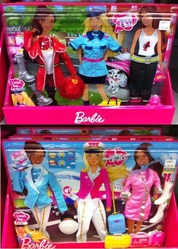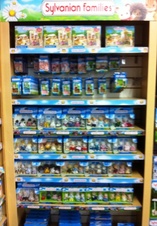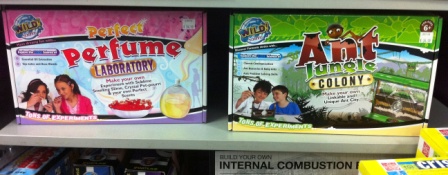|
I often send emails to people when I am concerned about something that is happening, when I want to point something out that is not right, or feel that my words may make a difference in the world. I have decided that I am going to start publishing emails like this on my blog. This is in the hope that perhaps someone reading my blog may be in the same situation and me, and reading my words may help them make the time/energy available to send a similar letter. Small steps to social change! (I am going through my archives, and this letter was sent to a Principal of a primary school following Robin Thicke's song 'Blurred Lines' being played at a junior school disco (children aged 5 - 7) last year.) Dear [Principal], First of all, thanks so much to you and the teachers for spending your Friday night entertaining children! You time is really appreciated. I just wanted to comment on some of the music played at the disco tonight. I realise it is an issue I am hyper-sensitive to, given my line of work, but I think it is an important issue that needs to be addressed. (The portrayal of sex and sexuality in music is one of the topics I speak about in seminars). This week there has been quite a bit of media attention given to Robin Thicke’s song ‘Blurred Lines’, (and the parody of it done by the Auckland Law Review) and it has widely been described as a song supporting rape culture, sexist attitudes and as being overwhelmingly misogynistic. I was therefore very surprised when it was played at the junior school disco this evening. This is the song here. Watching five year olds dance to the lines “I'll give you something big enough to tear your ass in two” left me feeling deeply uncomfortable. Others will sum it up the issues in this song far more eloquently than me – in particular this article. Children should not be exposed to music that they are not capable of critically deconstructing. We discuss many things in our home, but [my five year old son] is not ready for a discussion on rape culture. I know that some people will say “the kids don’t understand the lyrics anyway”. However if we send the message that this song is OK now, how do we then tell them it isn't right when they do understand? I propose that for future events, all songs are thoroughly vetted before going on the playlist. Kind regards, Rachel Hansen * The Principal responded immediately, agreeing with my concerns.
0 Comments
 This guest post is by Dannielle Miller. Dannielle is a highly respected and experienced educator, author and media commentator on issues affecting teenage girls. She is CEO of Enlighten Education and this post originally appeared on her blog. I had a revealing conversation with a single parent of a 12-year-old girl the other day. His daughter had been feeling particularly moody, he said, as she was just about to menstruate. I asked if she had had this premenstrual phase of her cycle explained to her. “Yes, she knows all about her periods” was his response. Yet I suspected after talking with him further that, as it is for many young girls who are given “the talk”, this conversation was reduced to an explanation of how to care for herself physically during her period. In its most simplistic form, it is often a chat about pads versus tampons, and tends to come with the dire warning that if they are not “careful” they could now fall pregnant. The fact is, once our girls menstruate, we don’t tend to be very helpful in advising them beyond sanitation, abstinence and, if we are particularly switched on, contraception options. Rarely do we discuss how to deal with the fact that for many girls and women emotions may be heightened during the premenstrual phase and behaviour altered. And even if we do allude to premenstrual tension (PMT), it tends to be in terms that promote and reinforce the archetypal “crazy lady” myth, which would have us reduce everything a woman expresses during this time to hysterical ramblings. It is particularly apt that women are often referred to as being “hysterical” during this stage in their cycle, as the term derives from the Greek word meaning “womb” (hence the term “hysterectomy”). Historically, society would have us believe some deep flaw within our wombs is literally making us insane! "One day she is all smiles and gladness. A stranger in the house seeing her will sing her praise . . . But the next day she is dangerous to look at or approach: She is in a wild frenzy . . . savage to all alike, friend or foe . .." Semonides, Greek philosopher (c. 556–468 BC) Premenstrual tension has been recognised as a medical condition since 1953 and has even controversially been used as a defence for murder—hence the headline to this post, which comes from a newspaper report chronicling a 1980s court case in London in which PMT was raised (unsuccessfully, I might add) as a defence for homicide. Premenstrual tension may include physical symptoms such as leg cramps, bloating and headaches; emotional changes such as increased depression and anxiety and lower self-esteem; and behavioural changes including increased irritability, social isolation and being accident prone. I have been known to suffer from particularly bad PMT at various points in my life. Leg cramps? Check. Bloating? Absolutely. Increased depression? I have been known to weep at the thought of making yet another school lunch. Irritability? My ex-husband used to always joke that I would threaten to divorce him once every month. Despite knowing my feelings at this time are certainly heightened, I also believe they are valid. In fact, as I’ve gotten older I’ve learnt to be very attentive to them, as I can often more clearly see, for example, what is wrong in my relationships at this stage. Usually I tend to repress these darker feelings. In a sense, my inner voice stops whispering and starts screaming at me (okay, okay, and often at others) that week! I am no longer so quick to silence my womb and my female intuition. Rachel Hansen, a colleague and sexual health educator, offered me her insights: "In my 20s, I used to dismiss PMT as that time of the month when I was particularly irrational, but I now think of this as a time when I actually allow myself to acknowledge and express the full range of my emotions. Talk about liberating! Menstruation has traditionally been associated with craziness and all things negative. I think that we women have to reclaim this time in our lives, to reclaim it as a particularly special, empowered time – heck, perhaps the closest we get to being Superwoman each month!" A friend who is a mum to two girls explained to me how she supports her eldest daughter to not ignore, but rather manage, her mood swings: "She would get so emotional and fiery, to the point where she was confused and didn’t know what was ‘wrong’ with her and why she kept arguing with us. I sat her down and explained that it’s very normal to feel the way she does and that her feelings are legitimate, but that in the midst of those more out-of-control moments around period time, we need a word to remind her, and us, as to why she’s struggling to articulate herself. I told her to choose a word that reminds her of something calm and happy that she could use, so that she can just say the word, and then that will be our signal to just stop and hug her, to show her that we care about her feelings, but that we need to pick up the conversation later. (Most of the time, what worried her so much is forgotten later anyway.) Her word is ‘unicorns’. This works really well for us and for her, and has made a huge difference." Psychologist Jacqui Manning offered me the following really practical tips for girls (and women) to help them better understand and manage this stage:
Of course, it’s also important to distinguish the feelings that really are worth listening to during this period (pardon the pun) from those that are okay to merely let wash over us. A good friend offered me this when I asked for her thoughts on PMT last week: "Danni, it’s all a bit too close to home for me today given that I’ve spent the morning in bed feeling bloated and crying for no clear reason at all. Based on the thought processes I was having, it has something to do with a letter that was sent about me in high school, a sad movie I once saw, and the fact that my boyfriend doesn’t have time to go out to lunch today. The TRIFECTA!" Certainly our womb-words can seem somewhat confused and irrelevant, but they can also be deeply insightful. I’m choosing to embrace the journey and help my daughters embrace it too. I have fond memories of my collection of childhood toys - wooden blocks, Big Ted, My Little Pony, the Cindy doll my parents bought me (instead of the Barbie I REALLY wanted), Lego, railway tracks... And nowadays I enjoy sometimes escaping into the imaginary world with my four-year-old boy and his collection of treasured toys. I read about the toys on offer for kids, I see kids playing with toys and the students I work with tell me about the toys that are and were important in their lives. There is a lot of writing about the highly gendered and also sexualised nature of many childhood toys these days, but on Friday I suddenly realised that I could count on one hand the number of times I have been in a toy store since entering adulthood. Inspired by other writers, I decided it was time to hit the front-line. What was on offer for New Zealand children? Was it as bad as it was in the USA? (where much of the research I read comes from) And what are the 'good' options out there? Armed with my camera, I entered our local toy store (one of a nationwide chain). And thus began an hour of walking up and down every aisle, taking note and photographing the good, the bad and the plain downright ridiculous. Into 'GIRL ZONE'  Upon entering the store, the first thing I noticed was that there was an area labelled ‘Girl’s Zone’, but the only other zone to be labelled was 'Pre-school'. Is this because all the other toys in the store are designed for boys (the default ‘normal’), or is it that all the other toys are for both boys AND girls but this wee corner is for girls only? I headed over to investigate further and was nearly blinded by the pink-ness. First up, the Barbie display...  "Hmmm, who do I want to be today?" I had high hopes for the Barbie 'I Can Be..." range. I recall as a child in the 1980s Barbie was a real 'girls can do anything' kinda gal, so I thought that surely by 2012, any remnants of that 1952 original passive doll would be well and truly banished. Unfortunately it seems that Barbie's career options in 2012 are very limited to what she can do whilst still wearing form-fitting lycra and/or heels. And the ubiquitous pink of course. There were five career options in the character dolls (see below) - I challenge anyone to find me any real-life professional woman whose wardrobe resembles any of these outfits?! And as someone who spent my teen years as a surf lifeguard, it sure as hell didn't resemble this Barbie scene. A friend was telling me recently that she had relented and had promised her daughter a Barbie as long as she could find one doing 'normal' things - such as snowboarder Barbie. There wasn't a snowboarder Barbie in this shop, but I can envisage her ensemble already...  And if you wanted to simply give your exisiting Barbie a new career, you had six different outfits to choose from. As you would never guess the occupations from their outfits, let me label them top to bottom, left to right:
Next to Barbie was the much criticised new line of Lego, designed especially for girls - the 'Friends' range. Their catch-phrase is "The Beauty of Building" - because we wouldn't want girls to forget for a moment that regardless of the activity, it always comes down to beauty, right?  Anyone for Disney Princess paraphernalia? I personally dislike this range from Lego. I dislike the emphasis on beauty and I hate that the 'Friends' range have totally different bodies to the 'standard' range - they have boobs and makeup. There is no way one of the 'Friends' would EVER want to play with a standard Lego boy or girl! It's problematic that in creating a specific 'girls' range, by default the rest of the Lego range becomes a 'boys' range, thus limiting girls' options. And the narrow range of activities and colours offered to the girls drives me nuts. There is absolutely no scientific evidence to indicate that girls have a natural inclination towards pastel colours. Lego is just playing into the pinkification of girl-world that serves to further the gender gap amongst children and thus increase the profits of those marketing things to children. Next up was the Disney Princess Zone. In a moment of marketing genius, this line was released in 2000 and now there are now more than 25,000 Disney Princess items and many other companies have jumped on board to create Princess-mania in girl world. Lyn Mikel Brown, co-author of Packaging Girlhood, is concerned by the the sheer dominance of princess culture: “When one thing is so dominant, then it’s no longer a choice; it’s a mandate, cannibalizing all other forms of play. There’s the illusion of more choices out there for girls, but if you look around, you’ll see their choices are steadily narrowing.” As I continued to wander round 'Girl's Zone' I found more and more pink washing, and more and more toys with come-hither eyes and sexy poses. What really struck me was how much some of these toys had changed since I was a girl. In my day 'My Little Pony' was a sweet chubby thing with demure eyes. Her latest incarnation is decidedly sexy, curvy and oh, those eyes. There were a few brands in 'Girl's Zone' that really stood out in a positive way: Venturing out of 'Girl Zone', I headed towards the 'Pre-school' zone... I was pleased to see the gender-neutral 'preschooler' sign, although interested in the offerings as many of the toys in the 'Girl's Zone' were aimed at the pre-school age group. This section gave the impression of being very gender-neutral, but upon closer inspection, many of the toys revealed themselves to be playing into tired gender stereotypes: However, there were also some great non-gender-limiting options: (No other 'zones' were labelled, so the following categories are ones that I have used) Puzzles and games Of all the different types of toys, I would have thought that this genre would have the least need to be gendered. Apparently not. I think the biggest issue with gendering things like this is that it strongly discourages cross-gender play. Unfortunately I feel that few four year old boys would want to play with the pinkified versions of these games. By then, for many boys the gender message has been well and truly absorbed. Outdoor toys  A WINNER from Little Tikes! Gender neutral packaging PLUS an image of a boy and a girl playing together! *calm down Rachel, keep in mind how ODD it is that this is so rare!* Building and Science Sets These were located in the area I think a child would describe as the 'Boys' Zone' (although there were no actual signs to indicate this). Alongside these sets seemed to be an overwhelming collection of toys based around themes of fighting and violence. As the mother of a little boy, I am disturbed by the messages these toys give him about what it means to be a man. I could not find a single toy in this area that depicted a boy or a man in a caring or nurturing role. Play is one way children learn about what it means to be an adult as they role-play with the toys provided to them. What are the consequences of raising a generation of boys whose understanding of manhood is based on ninjas, soldiers and Avengers? My little adventure into the toy store was both depressing and comforting.
Depressing because of the overwhelming number of gender-limiting options out there. I imagined my four year old son Sol being let loose in that store to explore and admire the toys available to him. He would be confronted with SO MANY gender-limiting stereotypes. He would be presented with a very clear picture of what it is to be a girl, and what it is to be a boy. Both of these definitions are very narrow, and he would quickly realise it was high time he dumped all of his female friends. I would label very few of the toys in this shop inherently "bad or "wrong", but it's the overwhelming message they present en masse, and also the stark reality of what is missing. I managed to find three images of girls and boys playing together IN THE WHOLE STORE. Research shows that cross-gender play in childhood increases the likelihood of more healthy romantic relationships in the teen years, yet it seems that marketers are doing all they can to prevent this. Comforting because I realised that, if I searched hard enough I could find toys and games that were not gender-limiting. There are options out there for parents willing to take the time to find them. Some companies are still marketing their product to both genders, and although many had fallen into the highly-gendered trap, a number still offered a 'gender neutral' option alongside their gendered stuff. For this, I am heartened, and this quote comes to mind: "Don't tell me where your priorities are. Show me where you spend your money and I'll tell you what they are." - James W. Frick Childhood lasts for such a precious short time, let's not shorten this further by placing limitations on who and what our children can be. Let's not allow the financial motivations of toy companies have any part in how our children define themselves. Let's give our children the time and the space to explore and experience their world without being limited to what pop culture dictates is "right" for their gender. As soon as we found out that I was pregnant we told our three-year-old son Sol about the pregnancy and he has been involved in the midwife appointments and lots of excited talk about our new baby. He recently accompanied us to the 20-week ultrasound scan. After the radiographer had done all the important measurements and observations, she got to the least important part – finding the vulva or the penis. While she was looking for that part of our baby’s body she said to me: “Ouhhh, you’ll soon know if you’ll have to be buying a pink tutu!” (I am sure my husband smothered a laugh at this point. I refrained from launching into a tirade about gender stereotyping and the findings of various neurological studies on babies and gender.) As it turns out, we spotted a vulva. And I realised that, at 20 weeks gestation this wee girl had already experienced her first gender stereotyping. It isn’t that pink tutus violently offend me, it’s that there was an assumption that if my baby had a vulva, then a pink tutu would be the most important thing on my mind, and that her vulva would automatically predispose her to an uncontrollable urge to wear pink tutus. Who knows, she could be an absolute ballet fanatic, in which case I am sure our house will be loaded with tutus of all description. Or she could be a soccer player, a hip-hop dancer, a chess-genius, a swimmer... - in which case we may have no pink tutus at all. Or maybe she’ll have stages of being all of the above, and our already-cluttered house will have a collection of all sorts of outfits in all sorts of colours. All I know is that I will do everything in my Mama-Bear power to protect her from the tirade of gender-limiting stereotypes that I know will attempt to surround her from birth (and before!). All of a sudden I am deeply grateful on a personal level for the amazing work done to counter such attitude by individuals and organisations such as Enlighten Education, Pigtail Pals, Pink Stinks and 7Wonderlicious. And I will leave you with the wisdom of little Riley, who articulates the craziness of all this stuff just so so well: As soon as we found out that I was pregnant, we told our three-year-old son Sol about my pregnancy and involved him in all the midwife appointments. He recently accompanied us to the 20-week scan. After the radiographer had done all the important measurements and observations, she got to the least important part – finding the vulva or the penis. As she was looking for that part of our baby’s body she said to me “Ouhhh, you’ll soon know if you’ll have to be buying a pink tutu!” (I am sure my husband smothered a laugh at this point. I refrained from launching into a tirade about gender stereotyping and the findings of various neurological studies on babies and gender.) As it turns out, we spotted a vulva. And I realised that, at 20 weeks gestation this wee girl had already experienced her first gender stereotyping. It isn’t that pink tutus violently offend me. It's that there was an assumption that if my baby had a vulva, then buying a pink tutu would be the most important consideration and that her vulva would automatically predispose her to an uncontrollable urge to wear pink tutus. Who knows, perhaps she will be an absolute ballet fanatic, in which case I am sure our house will be loaded with tutus of all description. Or she could be a soccer player, a hip-hop dancer, a chess-genius, a swimmer... - in which case we may have no pink tutus at all. Or maybe she’ll have stages of being all of the above, and our already cluttered house will have a collection of all sorts of outfits in all sorts of colours. All I do know is that I will do everything in my Mama-Bear power to protect my daughter from all the gender-limiting stereotypes that will attempt to smother her from birth (and before!). Suddenly I am hugely grateful on a personal level to those dedicated organisations and people who are out there campaigning on behalf of our girls - Enlighten Education, 7Wonderlicious, Pigtail Pals Ballcap Buddies, Pink Stinks and many more. I will leave you with little Riley, who articulates my feelings just so well: |
AuthorRachel is a writer and educator whose fields of interest include sexuality education, gender, feminism and youth development. Archives
November 2023
Categories
All
|










































 RSS Feed
RSS Feed




